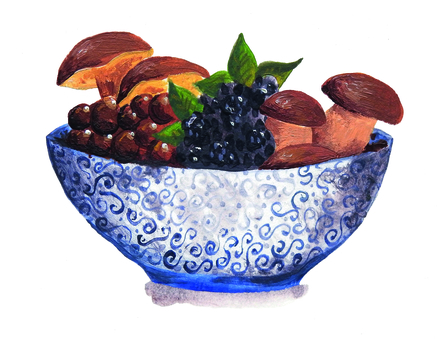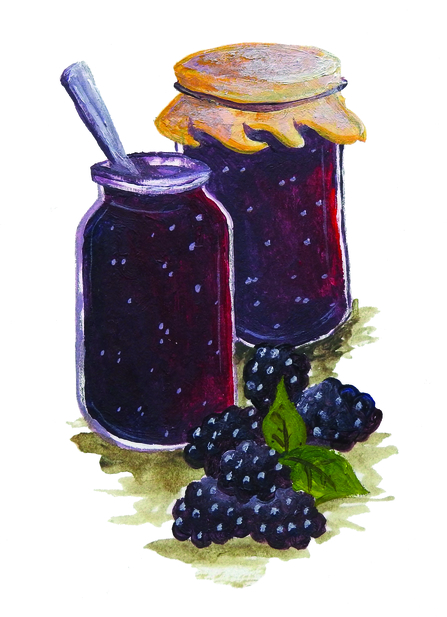The art of foraging is almost as ancient as humanity itself. Thousands of years ago, before early humans turned to farming at the end of the Stone Age, they taught themselves to hunt wild animals and gather plants to feed their communities, a behaviour so vital to their survival that it was the only form of sustenance for 90 per cent of human history. When carried out sustainably and respectfully, foraging is still an environmentally friendly way to source food, as there is no reliance on chemicals and pesticides, no disposable packaging, the plants are seasonal and organic, and there is no carbon footprint from importing and transportation. Even better, foraging is essentially free and accessible to everyone, whether you live in the countryside or the inner-city.

Tiffany Francis-Baker
A good forager is an ethical one. Pick only the amounts you need to ensure plant populations remain healthy, and leave plenty for the birds and wildlife with whom we share our wild food. A good tip is to think about how much you actually need before harvesting a species, as it’s easy to get carried away by an abundant plant and pick more than you can actually cook with. It’s important to know the legalities of picking plants like wildflowers in your country. In Britain, for example, picking wildflowers for personal use and not for commercial reasons is technically legal, as long as the plants aren’t rare or endangered, although it is always best to avoid picking wildflowers as they are generally in decline. It’s also important to recognise the difference between picking a leaf or flower and uprooting the entire plant, which is an illegal offence under the Wildlife and Countryside Act without the landowner’s permission. A partially-picked plant can usually regenerate and survive, but an uprooted plant is gone forever. It is also vital not to take plants from nature reserves, wildlife-sensitive areas and places with designations for wildlife, including SSSIs. Be sure to check local bylaws to ensure foraging is permitted in the area you are visiting.

Tiffany Francis-Baker
Remember to keep to public places and steer clear of private land, and avoid searching along the edges of large agricultural fields which have often been treated with chemicals. Similarly, watch out for popular dog walking routes. Pregnant women should be careful with one or two species, such as bog myrtle and chamomile, as these can cause complications. The golden rule is that if you’re not 100% sure of a species, don’t pick it. There are plenty of other resources - including the internet - that can help you clarify what you’ve found, but if you’re still not completely sure about a new species, it just isn’t worth the risk.
Foraging is a great way to spend more time in nature and connect with the world around us. Not only does it encourage us to learn about different species of trees, shrubs, seaweeds, herbs, nuts, fruits, seeds and mushrooms, it also helps us engage with the landscape as a whole. When we keep a closer eye on the natural world, we are more likely to notice other animals, birds and insects, protect their habitats and appreciate the fragility and complexity of our ecosystems.
Tiffany Francis-Baker is a writer, artist and environmentalist from the South Downs in Hampshire. Her latest book Concise Foraging Guide is published by Bloomsbury Wildlife in association with The Wildlife Trusts on 13th May 2021.

